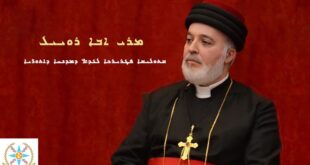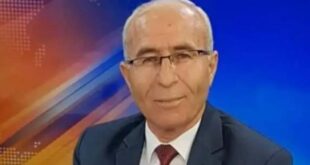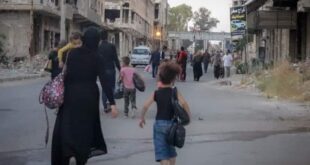USA, Modesto CA – ado — the newly appointed US-born bishop of the Western California diocese of the Assyrian Church of the East, secretly ordered the priests, deacons and sub-deacons of St. Zaia Cathedral in Modesto that they, and all other clergy of the Assyrian Church of the East are to have nothing to do with the Ancient Church of the East. They are not to attend mass, funerals, weddings, baptisms or any other Church-related ordinances and receive sacraments from them, nor are they to mix with them on a social level. Any who do not comply with this are threatened with ostracism, marginalisation within the Church, or excommunication. This comes as a shock to the Assyrian parishioners and faithful, who were duly informed, and who maintain at least a cordial relationship with their fellow Assyrians belonging to other Churches, including the Ancient Church of the East. Many of them even have close family members that belong to the Ancient Church of the East.
It has since become apparent that this was one of the decrees issued by the Holy Synod convened in Erbil, northern Iraq in 2008. When complaints were made to Dr. Sargon Dadesho of the Bet-Nahrain Democratic Party in nearby Ceres, which airs the Assyria Vision Satellite Channel, to bring awareness of this issue to the channel’s viewers, he was startled and admitted knowledge of the decree – but remarked that it was to have been kept a secret known only to members of the clergy. He also supported it because he alleged that the Ancient Church of the East has worked against the Assyrian Church of the East and therefore deserves to be isolated in such a way. As one angry Church member put it, “The Church of the East no longer deserves to include the name ‘Assyrian’ in its title since it is no longer a national Church. Neither can the Bet-Nahrain Democratic Party be seen as truly patriotic. By separating Assyrians of different denominations, rather than trying to unite them, they are actually working against our cause as a nation. They are trying to force us to cut off our ties with family and lifelong friends, over disputes between hierarchy members and clergymen!”
There has been much controversy lately in the Western California diocese of the Assyrian Church of the East due to the ordination of Mar Awa Royel. Criticism has largely been aimed at the Church hierarchy’s disregard for Mar Sargis Yosip, a senior bishop formerly based in Baghdad , but who has been living in Modesto as a refugee for roughly the past three years. Catholicos-Patriarch Mar Dinkha IV, himself based in Chicago , has repeatedly insisted that Mar Sargis return to his diocese in the volatile Baghdad suburb of Dora, which has until recently suffered constant attacks, bombings and purges of the area’s Christian majority by Jihadists, Muslim extremists and terrorists. Transferring bishops has become common for Iraqi Churches in the years following the Second Gulf War, and is nothing new. The Chaldean Catholic Church transferred senior Metropolitan Mar Jibrail Kassab of the Metropolitan Archbishopric of Basra to Sydney , Australia and the newly formed arch-eparchy of Oceania only in 2006.
In the absence of Mar Bawai Soro, who was stripped of his rank as bishop of Western California diocese by the Synod of the Church of the East in November 2005 for his alleged ‘pro-Catholic’ leanings, and in light of his decades of service to the Church as a hereditary bishop whose family has provided bishops to the Church of the East for at least the past five centuries, Mar Sargis would have been the ideal candidate to be appointed for the diocese of Western California. Instead Mar Sargis has been kept in a state of limbo, neither here nor there and forced to rely on the charity of concerned friends and faithful around the world who regularly provide him with money to pay for his food, care, and lodgings. Furthermore, in an attempt to get him to return to Iraq Mar Meelis Zaia, Metropolitan of Australia and New Zealand archdiocese, even demanded his attendance of last year’s Synod in Erbil – knowing full well that he had recently had heart surgery and was unfit to travel.
The St. Zaia parish in Modesto is also up in arms over an issue that re-emerged that Sunday when a toilet was installed in the Diaconion, to the left of the Sanctuary of the Church. This was a feature included in the original church plans by Mar Bawai Soro and was one of the reasons for the removal of that parish from under his jurisdiction in the mid 1990s. Angry parishioners sneaked into the church the night before its consecration and ripped out the toilet, and it was never replaced, until now under the direction of Mar Awa Royel. This is something unknown in the history of the Church of the East, and is not allowed in the Church laws and traditions. “For a toilet to be located within the general area of the Sanctuary is unheard of… Only a wall of four inches separates the toilet in the Diaconion from the Bishop’s Throne in the Sanctuary,” one angry parishioner remarked. The pictures attached show the church interior, and the interior of the Diaconion, the location of the toilet cubicle within it and its close proximity to the Sanctuary. The St. Zaia Cathedral in Modesto is the only known church building in the world, belonging to the Church of the East, which contains a toilet in the Diaconion, which raises the question, “why?”
The Diaconion (Beth-Dyaqon in Syriac) is the room to the north of the Sanctuary traditionally used for storage of items related to Church services, and also as a vestry and treasury. It is also called the Martyrium (Beth-Sahde), since in older churches it was commonly reserved for the burial of clerics and prelates. Thus, in the words of another angry parishioner, “For a toilet to be located in this sacred space, practically next to the Divine Altar upon which the Holy Spirit descends upon the communion bread and wine, making them the body and blood of Christ, is an insult to God himself and a disregard of the sort of tradition that makes the Church of the East unique amongst the ancient Eastern Churches.” Members of the parish suspect that this was done to distract their attention from other issues, especially the cutting of the Church’s ties with the Ancient Church of the East.
The original St. Zaia Cathedral was built in the Jilu district (modern Cilo, southeast Turkey ) around 427 AD by the saint himself and it is also where he is buried. It was also the diocese traditionally governed by bishops of the Mar Sargis family, and the Assyrians of Jilu have always shared solidarity with those of the Tyare and Tkhuma districts, whose descendants form the bulk of the Ancient Church of the East’s membership. Thus the Church faithful originating from Jilu see this as an insult to their patron saint, their bishop and their people on the part of the hierarchy of the Assyrian Church of the East. They feel they have been marginalised, discriminated against, and are not being given a prominent role in Church life because of their identity as Jilu Assyrians.
Thus Modesto at the moment seems to be at the epicentre of a broader conflict that is ripping apart at the Church of the East around the world, a conflict between the traditional and the not-so-traditional, between rival hierarchy members, and between the Ashiret (‘tribal’) and Rayat (‘non-tribal’) Assyrians; and also an attempt to assert the ‘Assyrian’ Church of the East as separate and above, not equal to, other Assyrian Churches. It is hoped that a peaceful solution could be found to end this in the most suitable manner, with the cooperation of both the hierarchy and laity for the good of the Assyrian people and the Church of the East as an institution.
 Assyrian Democratic Organization ADO
Assyrian Democratic Organization ADO







